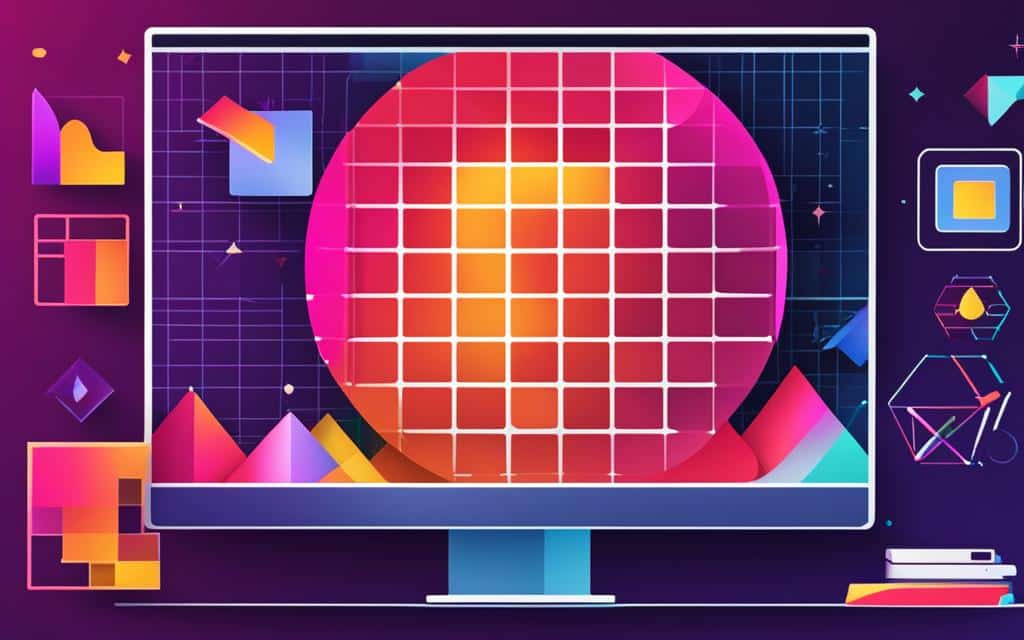Table of Contents
Scalable Vector Graphics (SVGs) are a powerful tool for creating dynamic and responsive designs on the web. SVGs are based on XML and allow for the creation of two-dimensional graphics using familiar geometric shapes. They are supported by all major web browsers and can be interacted with using DOM node-based APIs. SVGs offer various animation and effect capabilities, including the use of the element, which allows for the creation of complex shapes and graphics. CSS can be used to animate SVG paths using the stroke-dasharray and stroke-dashoffset attributes, while JavaScript provides even more flexibility and control over SVG animations.
Animating SVG with CSS and JavaScript offers a wide range of possibilities for creating dynamic and interactive web designs. SVGs provide a lightweight and scalable solution for creating sharp and responsive graphics, regardless of the screen size or resolution. SVGs can be easily manipulated and animated using CSS and JavaScript, allowing for dynamic and interactive web designs. Whether you choose to animate SVG paths, objects along paths, or utilize JavaScript libraries for more advanced animations, SVGs offer endless opportunities for bringing your designs to life. By leveraging the capabilities of SVG and exploring the resources available, you can enhance your web front-end work and create visually stunning experiences for your users.
Introduction to SVG Paths and CSS Animation
SVG paths are a fundamental element in SVG that enables the creation of complex 2D shapes. The <path> element utilizes a series of drawing commands, such as M (move to), L (line to), A (arc), and more, to control a virtual pen for generating intricate graphics and designs. CSS plays a crucial role in animating SVG paths by leveraging the stroke-dasharray and stroke-dashoffset attributes.
The stroke-dasharray attribute regulates the pattern of dashes and gaps applied to the path’s outline, while the stroke-dashoffset attribute specifies the starting position within the dash pattern. By manipulating these attributes, SVG paths can be animated to create the illusion of a gradual drawing effect on the screen.
Let’s delve deeper into the mechanisms behind SVG paths and CSS animation to understand how they work together to bring life to web designs.
Animating Objects Along SVG Paths
Another fascinating application of SVG animation is the ability to animate objects or elements along SVG paths. This can be accomplished using the offset-path and offset-distance CSS properties, which provide precise control over the positioning and movement of elements on the path.
The offset-path property defines the path along which the element should be positioned. It accepts values such as paths, shapes, or even the names of predefined paths. By specifying the desired path, you can control the trajectory of the animated object.
The offset-distance property determines the position of the element along the offset path, measured as a percentage of the total path length. This allows you to set the starting point, control the speed and direction, and even create complex animations by adjusting the offset distance over time.
By combining these two properties, you can create captivating effects where objects smoothly follow a specific path along the SVG. This technique is especially useful for creating interactive and engaging animations on the web, enhancing user experience and visual impact.
In this example, a ball is animated to move along a circular path in an SVG. The offset-path property is set to ‘path(“M100 200 A100 100 0 1 1 300 200”)’, which defines a circular path with a specified center and radius. Meanwhile, the offset-distance property is animated with keyframes to provide a smooth movement effect.
A keyframe animation is a way to define specific points along the timeline of an animation. In this case, we could set keyframes at 0%, 50%, and 100% to control the position of the ball at different stages of the animation.
Keyframe animation example:
@keyframes ballAnimation { 0% { offset-distance: 0%; } 50% { offset-distance: 50%; } 100% { offset-distance: 100%; } }
By applying the ‘ballAnimation’ keyframes to the offset-distance property, we can create a smooth and continuous animation where the ball follows the circular path. You can adjust the keyframes to modify the timing, position, or other properties to achieve desired effects.
Animating objects along SVG paths provides a flexible and visually appealing way to bring life to your designs. Whether it’s a simple movement along a predefined path or a complex sequence of animations, the combination of offset-path and offset-distance properties opens up numerous possibilities for creating dynamic and engaging web experiences.
| Benefits of Animating Objects Along SVG Paths | Considerations |
|---|---|
| An interactive and engaging animation technique | Ensure browser compatibility |
| Enhanced user experience | Optimize performance for smooth animations |
| Flexible control over object movement | Avoid excessive complexity in path design |
| Precision in positioning and trajectory | Test and fine-tune animations across devices |
SVG Animations Using JavaScript
JavaScript opens up a world of possibilities for animating SVG elements. One powerful function that JavaScript provides is path.getTotalLength(), which dynamically calculates the length of an SVG path. This feature allows for more precise animations, as developers can precisely control the timing and positioning of each animation sequence.
Several JavaScript libraries simplify the process of implementing SVG animations. Here are three popular options:
- Snap.svg: This library offers a wide range of features and functionalities to enhance SVG animations. It provides methods for drawing SVG images, animating them, and creating complex animations using a simple configuration-driven approach.
- anime.js: With anime.js, developers can easily create high-performance animations with a focus on flexibility and simplicity. It supports a wide range of animation properties and offers a powerful timeline feature for orchestrating complex animations.
- Vivus: Vivus specializes in animating the drawing of SVGs. It allows developers to create captivating animations by progressively revealing the paths of SVG images. Vivus supports various animation options, such as synchronization, playback speed, and start/end callbacks.
By leveraging JavaScript and these libraries, developers can make SVG animations more interactive and visually appealing. The combination of JavaScript’s dynamic capabilities and the functionality of these libraries empowers developers to create stunning and engaging animations that bring SVGs to life.
| Library | Key Features |
|---|---|
| Snap.svg | Flexible configuration-driven animations Support for drawing and animating SVG images |
| anime.js | High-performance animations Timeline feature for complex animations |
| Vivus | Progressive SVG drawing animations Support for synchronization and playback customization |
Benefits and Further Reading
SVG animations offer several benefits for web designers and developers. They provide a lightweight and scalable solution for creating sharp and responsive graphics, regardless of the screen size or resolution. With SVGs, you can achieve beautiful and high-quality visuals that adapt seamlessly to different devices, ensuring a consistent user experience.
One of the key advantages of SVG animations is their flexibility in terms of manipulation and animation. CSS and JavaScript can be used to easily bring SVGs to life, allowing for dynamic and interactive web designs. CSS animation properties such as transform, opacity, and transition can be applied to SVG elements, providing endless possibilities for creating engaging animations.
SVG animations are not only visually appealing but also highly accessible. They can be easily customized and optimized for different accessibility requirements, making them inclusive for all users. Additionally, SVG animations have a small file size, reducing the load time of web pages and contributing to a faster and smoother browsing experience.
Whether you’re new to SVG animations or looking to enhance your skills, there are various resources available for further reading. These resources include articles and tutorials that cover more in-depth techniques and examples of SVG animations. By delving into these materials, you can gain a deeper understanding of SVG animation principles and learn advanced techniques to take your animations to the next level.
In addition to articles and tutorials, you can explore the use of SMIL (Synchronized Multimedia Integration Language) for advanced animation effects. SMIL is an XML-based language specifically designed for creating interactive multimedia presentations, including SVG animations. It provides powerful features for controlling timing, synchronization, and event handling, opening up new possibilities for creating complex and synchronized animations.
Take your SVG animations to new heights by diving into these educational resources. Expand your knowledge and unlock the true potential of SVG animations in your web design endeavors.
Benefits of SVG Animations:
- Scalable and responsive graphics
- Lightweight and fast-loading
- Flexible manipulation and animation
- Highly accessible and inclusive
Further Reading:
- Tutorial: Getting Started with SVG Animations
- Article: Advanced Techniques for SVG Animation
- Guide: Optimizing SVG Animations for Performance
- Tutorial: Exploring SMIL for Advanced Animation Effects
Conclusion
In conclusion, animating SVG with CSS and JavaScript offers a wide range of possibilities for creating dynamic and interactive web designs. SVGs provide a powerful tool for creating scalable and responsive graphics, and with the use of CSS and JavaScript, these graphics can be animated in various ways.
Whether you choose to animate SVG paths, objects along paths, or utilize JavaScript libraries for more advanced animations, SVGs offer endless opportunities for bringing your designs to life. By leveraging the capabilities of SVG and exploring the resources available, you can enhance your web front-end work and create visually stunning experiences for your users.
SVG animations provide numerous benefits for web designers and developers. They offer lightweight and scalable solutions for creating sharp and responsive graphics, making them suitable for all screen sizes and resolutions. With the ability to manipulate and animate SVGs using CSS and JavaScript, designers can create dynamic and interactive web designs that engage users and enhance the overall user experience. By further exploring the resources available, designers can expand their knowledge and master the art of SVG animations, taking their web designs to the next level.
FAQ
What are SVGs and how can they be animated?
SVGs (Scalable Vector Graphics) are a powerful tool for creating dynamic and responsive designs on the web. They can be animated using CSS and JavaScript. CSS can be used to animate SVG paths using the stroke-dasharray and stroke-dashoffset attributes, while JavaScript provides even more flexibility and control over SVG animations.
How do SVG paths work?
SVG paths are a powerful element in SVG that allow for the creation of almost any advanced 2D shape. The element works by taking a sequence of drawing commands, such as M (move to), L (line to), A (arc), etc., that control a virtual pen used to create complex shapes and graphics.
How can SVG paths be animated using CSS?
SVG paths can be animated using CSS by manipulating the stroke-dasharray and stroke-dashoffset attributes. The stroke-dasharray attribute controls the pattern of dashes and gaps used to stroke the path, while the stroke-dashoffset attribute specifies how far into the dash pattern to start the dash.
How can objects be animated along SVG paths?
Objects can be animated along SVG paths using the offset-path and offset-distance CSS properties. The offset-path property specifies the path along which the element should be positioned, while the offset-distance property specifies a position along the offset path.
How can SVG animations be created using JavaScript?
JavaScript provides additional possibilities for animating SVG elements. By using functions such as path.getTotalLength(), the length of an SVG path can be dynamically calculated, allowing for more precise animations. JavaScript libraries such as Snap.svg, anime.js, and Vivus can also be used to simplify SVG animations and provide more advanced features.
What are the benefits of SVG animations?
SVG animations offer a lightweight and scalable solution for creating sharp and responsive graphics on the web. They can be easily manipulated and animated using CSS and JavaScript, allowing for dynamic and interactive web designs.
Where can I find further resources on SVG animations?
To explore the possibilities of SVG animations further, there are several additional resources available. These resources include articles, tutorials, and information on using SMIL for advanced animation effects. These can help expand your knowledge and take your SVG animations to the next level.













